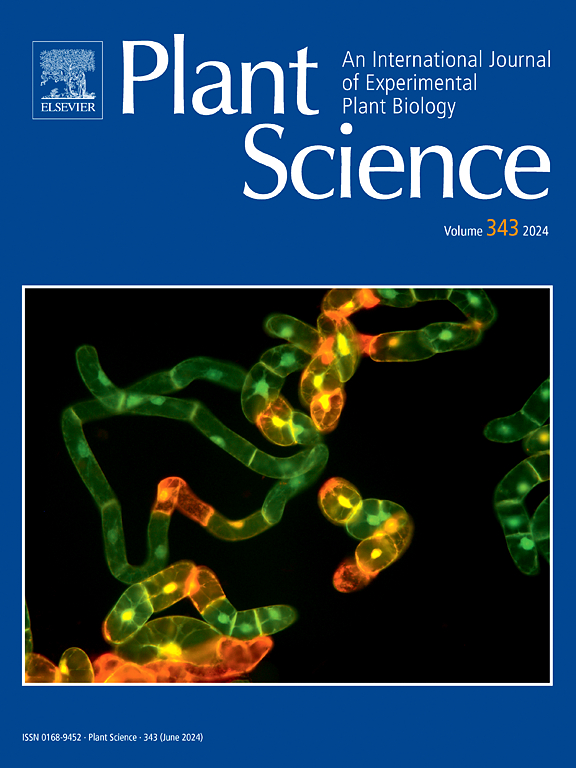The role of multiple C2 domain and transmembrane region proteins in mediating tomato development
IF 4.1
2区 生物学
Q2 BIOCHEMISTRY & MOLECULAR BIOLOGY
引用次数: 0
Abstract
Multiple C2 domain and transmembrane region proteins (MCTPs) are an evolutionarily conserved family involved in protein trafficking and signal transduction. Although several investigations have demonstrated that MCTPs play crucial roles in plant growth and development, their specific biological functions within tomatoes (Solanum lycopersicum L.) remain predominantly mysterious. In this study, we identify and characterize 14 SlMCTP genes derived from tomatoes. Chromosome mapping, gene structure, phylogenetic connections, and subcellular localization are presented herein. Meanwhile, the varied expression patterns of SlMCTPs within different tissues and under diverse hormonal and NaCl treatment conditions are revealed. Moreover, we find that SlMCTP10, SlMCTP11, and SlMCTP12, which belong to the same clade, display high expression levels at the main stem apex, suggesting their potential functions in shoot development. Furthermore, we knock out the SlMCTP10 gene in tomato using CRISPR-Cas9. The Slmctp10 seedlings exhibit defects in shoot meristem development, manifested by abnormal cotyledons and shorter internodes. Together, our findings offer fundamental insights into the SlMCTP family and uncover the role of SlMCTP proteins in regulating shoot meristem development in tomato plants.
多个C2结构域和跨膜区蛋白在番茄发育中的作用
多C2结构域和跨膜区蛋白(MCTPs)是一个进化上保守的家族,参与蛋白质运输和信号转导。尽管一些研究已经证明MCTPs在植物生长发育中起着至关重要的作用,但它们在番茄(Solanum lycopersicum L.)中的特定生物学功能仍然主要是神秘的。在这项研究中,我们鉴定了来自番茄的14个SlMCTP基因。染色体作图,基因结构,系统发育连接,和亚细胞定位提出在这里。同时,揭示了SlMCTPs在不同组织内、不同激素和NaCl处理条件下的表达规律。此外,我们发现SlMCTP10、SlMCTP11和SlMCTP12属于同一支系,在主茎端表达水平较高,表明它们在茎部发育中具有潜在的功能。此外,我们使用CRISPR-Cas9敲除了番茄中的SlMCTP10基因。Slmctp10幼苗的茎部分生组织发育存在缺陷,表现为子叶异常和节间缩短。总之,我们的研究结果为SlMCTP家族提供了基本的见解,并揭示了SlMCTP蛋白在调节番茄植株茎部分生组织发育中的作用。
本文章由计算机程序翻译,如有差异,请以英文原文为准。
求助全文
约1分钟内获得全文
求助全文
来源期刊

Plant Science
生物-生化与分子生物学
CiteScore
9.10
自引率
1.90%
发文量
322
审稿时长
33 days
期刊介绍:
Plant Science will publish in the minimum of time, research manuscripts as well as commissioned reviews and commentaries recommended by its referees in all areas of experimental plant biology with emphasis in the broad areas of genomics, proteomics, biochemistry (including enzymology), physiology, cell biology, development, genetics, functional plant breeding, systems biology and the interaction of plants with the environment.
Manuscripts for full consideration should be written concisely and essentially as a final report. The main criterion for publication is that the manuscript must contain original and significant insights that lead to a better understanding of fundamental plant biology. Papers centering on plant cell culture should be of interest to a wide audience and methods employed result in a substantial improvement over existing established techniques and approaches. Methods papers are welcome only when the technique(s) described is novel or provides a major advancement of established protocols.
 求助内容:
求助内容: 应助结果提醒方式:
应助结果提醒方式:


